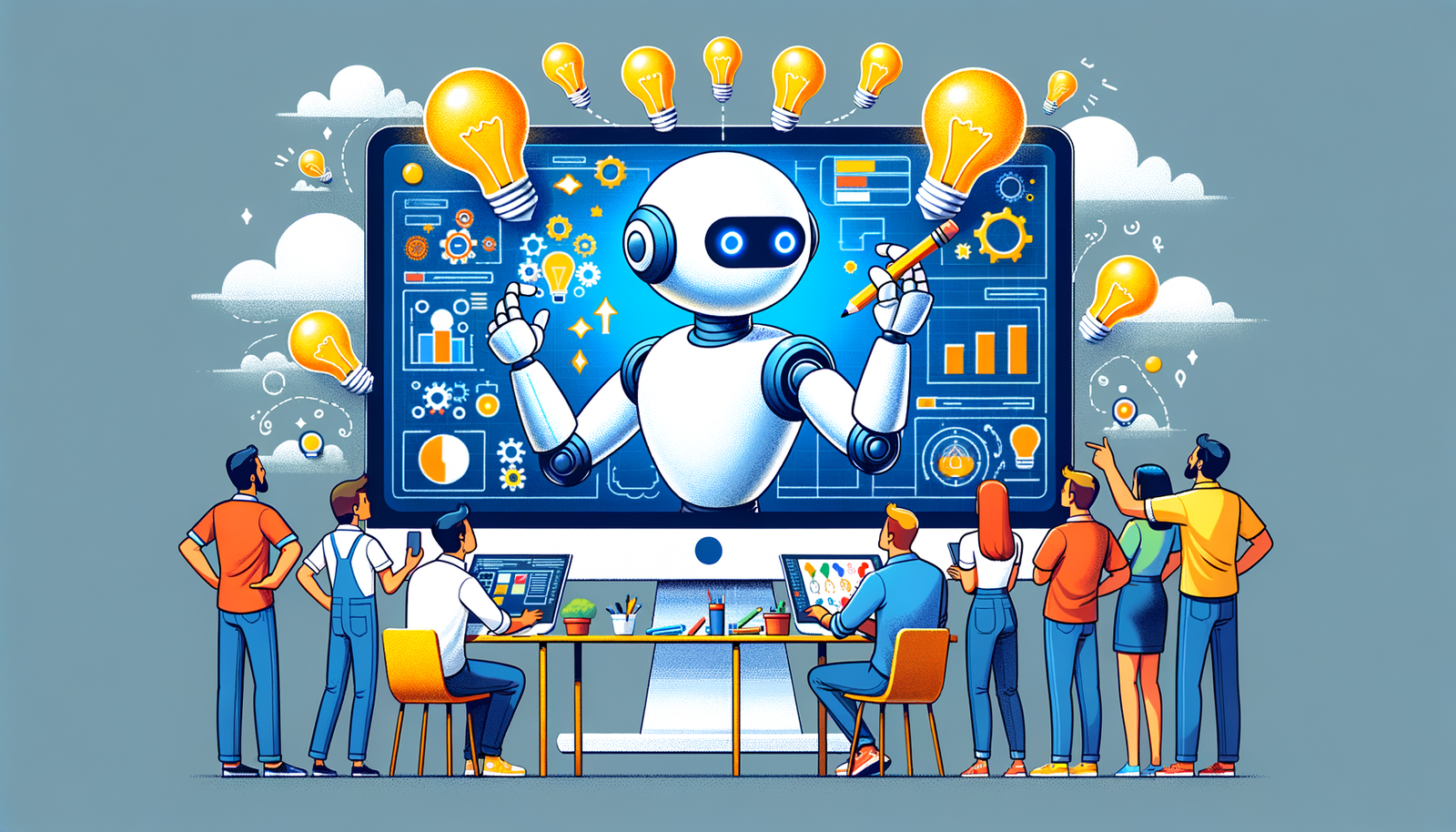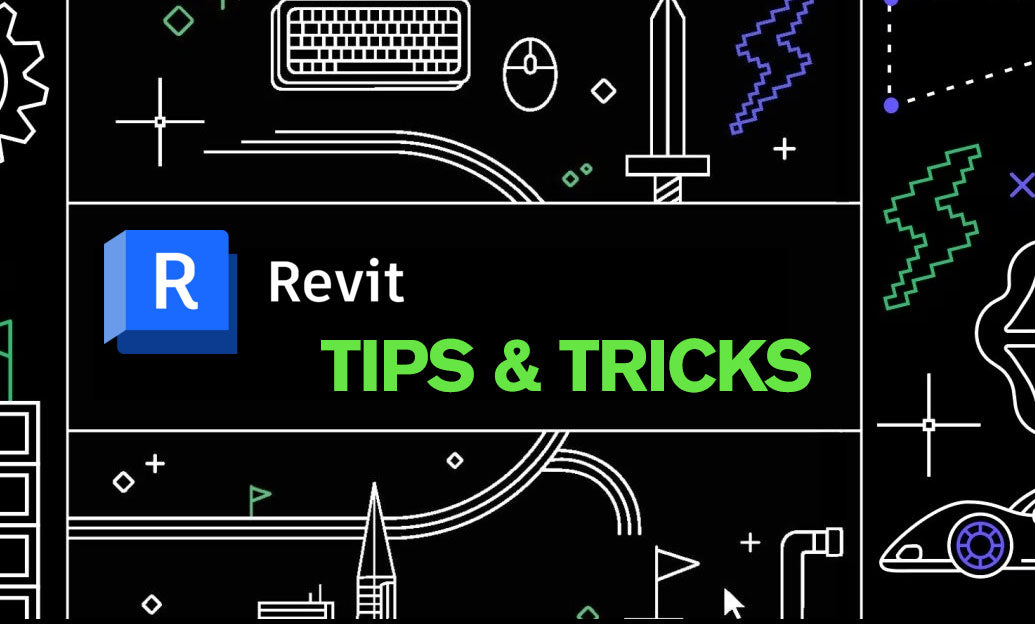Your Cart is Empty
Customer Testimonials
-
"Great customer service. The folks at Novedge were super helpful in navigating a somewhat complicated order including software upgrades and serial numbers in various stages of inactivity. They were friendly and helpful throughout the process.."
Ruben Ruckmark
"Quick & very helpful. We have been using Novedge for years and are very happy with their quick service when we need to make a purchase and excellent support resolving any issues."
Will Woodson
"Scott is the best. He reminds me about subscriptions dates, guides me in the correct direction for updates. He always responds promptly to me. He is literally the reason I continue to work with Novedge and will do so in the future."
Edward Mchugh
"Calvin Lok is “the man”. After my purchase of Sketchup 2021, he called me and provided step-by-step instructions to ease me through difficulties I was having with the setup of my new software."
Mike Borzage
AI-Driven Design: Revolutionizing Iterations and Enhancing Creativity
December 30, 2024 8 min read


Overview of Design Iterations and Revisions
Design iterations and revisions are the lifeblood of any successful design process. They represent the cyclical nature of refining and improving upon initial concepts to achieve a final product that meets or exceeds expectations. In traditional design workflows, this process involves multiple stages of sketching, prototyping, testing, and feedback, allowing designers to progressively enhance their creations. The importance of design iterations cannot be overstated; they enable designers to explore different ideas, identify potential flaws, and optimize the functionality and aesthetics of the final product. However, despite their critical role, traditional design iterations often present significant challenges and limitations. The process can be time-consuming and resource-intensive, requiring substantial manual effort to produce and evaluate each iteration. Designers may find themselves repeating mundane tasks, which can stifle creativity and lead to fatigue. Additionally, tight deadlines and budget constraints can limit the number of iterations possible, potentially compromising the quality of the final design. These challenges highlight the need for more efficient methods to streamline the iteration process without sacrificing the depth and quality of exploration that is essential for innovative design.
Emergence of AI in Design
The integration of artificial intelligence into design marks a transformative shift in how designers approach the creative process. Over the past few years, AI has moved from a theoretical concept to a practical tool that is actively reshaping design methodologies. Initially, AI's role in design was limited to simple automation tasks, but advancements in machine learning and data analytics have expanded its capabilities significantly. Today, AI can assist in complex tasks such as generating design alternatives, predicting performance outcomes, and optimizing designs based on specific criteria. The potential benefits AI brings to the design table are substantial. By leveraging AI, designers can overcome traditional challenges, such as time constraints and repetitive tasks, freeing them to focus more on creativity and innovation. AI can process vast amounts of data much faster than humans, providing insights that might otherwise go unnoticed. This not only enhances efficiency but also opens up new possibilities for experimentation and exploration. With AI, the design process becomes more dynamic and responsive, allowing for a level of flexibility and adaptability that was previously unattainable.
Automating Repetitive Tasks
One of the most significant ways AI streamlines the design process is by automating repetitive tasks. Designers often spend considerable time on routine activities such as adjusting layouts, resizing elements, and organizing components. AI can take over these tasks, using algorithms to perform them quickly and accurately. For example, AI can automatically align design elements, suggest color schemes based on predefined parameters, or generate variations of a design for different platforms and devices. This automation not only saves time but also reduces the likelihood of human error. The impact on designer productivity is profound. By alleviating the burden of mundane tasks, designers can dedicate more energy to creative problem-solving and conceptual development. This shift enhances overall efficiency and can lead to higher-quality outcomes. Additionally, the use of AI in automating tasks supports consistency across designs, ensuring that branding and stylistic guidelines are maintained throughout all iterations. The integration of AI in these areas allows for a more streamlined workflow and contributes to a more efficient and satisfying design experience.
Predictive Analytics for Design Outcomes
AI’s capabilities extend beyond automation into the realm of predictive analytics, fundamentally altering how designers forecast design performance. By analyzing large datasets, AI can identify patterns and predict how a design will function or be received once implemented. For instance, in architectural design, AI can simulate environmental conditions to assess how a building will perform in terms of energy efficiency or structural integrity. In product design, AI can predict user interactions and potential usability issues. This foresight enhances decision-making by providing designers with data-driven insights that were previously difficult or impossible to obtain. With predictive analytics, designers can make informed choices about materials, structures, and functionalities before committing resources to prototyping or production. This not only reduces costs but also minimizes the risks associated with trial-and-error approaches. Furthermore, AI’s ability to forecast outcomes allows for more targeted and effective design strategies, ultimately leading to products and structures that better meet the needs and expectations of users.
Generative Design Techniques
Generative design is an AI-driven approach that revolutionizes the creation of design alternatives. By inputting specific parameters and constraints, such as material types, spatial requirements, and performance criteria, AI algorithms can generate a multitude of design options. This process harnesses the power of computation to explore design spaces far beyond human capacity. Designers are presented with a range of solutions that meet the defined criteria, many of which may not have been conceived through traditional methods. Generative design balances creativity and efficiency by enabling rapid exploration of ideas while adhering to practical limitations. It encourages innovation by exposing designers to unconventional solutions and design possibilities. Moreover, it allows for optimization of designs based on various factors, such as cost, weight, and environmental impact. The use of generative design techniques expands the creative toolkit of designers, providing them with powerful means to push the boundaries of what is possible and enhance the overall quality and functionality of their designs.
Advanced Design Software with AI Capabilities
The evolution of design software has been significantly influenced by the integration of AI capabilities. Leading design tools now incorporate AI features that enhance various aspects of the design process. Software such as Autodesk's Fusion 360 and Adobe's Sensei utilize AI to offer intelligent recommendations, automate complex tasks, and provide advanced analytics. Key features of these AI-powered design tools include generative design modules, predictive performance analysis, and automated optimization. These tools facilitate streamlined iterations by enabling designers to quickly generate and assess multiple design options. They also support collaborative efforts by allowing team members to share insights and adjustments in real-time. The incorporation of AI into design software democratizes access to advanced design functionalities, allowing designers of all levels to leverage powerful computational resources. This advancement not only improves efficiency but also elevates the standard of design outputs, fostering innovation and excellence in the field.
Integration with Existing Design Workflows
Integrating AI tools with existing design workflows is essential for maximizing their benefits without disrupting established processes. AI tools are designed to complement traditional methods, enhancing rather than replacing the designer's role. They can be incorporated at various stages of the design process, from initial concept development to final revisions. By integrating AI, designers can maintain their creative control while benefiting from AI's analytical and generative capabilities. This synergy enhances productivity and allows for more effective collaboration among team members. Integration can be achieved through plugins, APIs, and software platforms that are compatible with commonly used design applications. By seamlessly blending AI tools with familiar workflows, designers can adopt new technologies with minimal learning curves, ensuring that the transition is smooth and productive. The key is to view AI as a collaborative partner that augments the designer's skills and expertise.
Collaborative AI Platforms
Collaborative AI platforms represent a significant advancement in facilitating teamwork and communication among designers. These platforms harness AI to enhance collaboration by providing real-time feedback, enabling simultaneous editing, and offering intelligent suggestions. Features such as shared workspaces, version control, and integrated communication tools allow teams to work together more efficiently, regardless of their physical locations. AI-driven collaboration tools can analyze project data to identify potential conflicts or areas for improvement, fostering a more proactive approach to design revisions. Real-time adjustments and feedback are critical in fast-paced design environments, and AI platforms provide the infrastructure to support this dynamic interaction. By promoting transparency and accessibility, collaborative AI platforms ensure that all team members are aligned in their objectives and informed about changes as they occur. This leads to more cohesive and effective design outcomes, as collective insights are integrated seamlessly into the iterative process.
Increased Efficiency and Reduced Timeframes
The adoption of AI in design revisions has a direct impact on efficiency and project timelines. By automating routine tasks and providing rapid analysis of design options, AI significantly shortens the design cycle. Designers can iterate more quickly, moving from concept to final product in less time. This acceleration is particularly valuable in industries where time-to-market is critical. Cost savings and resource optimization are natural byproducts of increased efficiency. With AI handling time-consuming tasks, teams can reduce labor costs and allocate resources more strategically. The ability to rapidly test and refine designs also reduces material waste and minimizes the need for physical prototypes. Overall, the integration of AI leads to leaner operations and allows organizations to respond more agilely to market demands and customer feedback.
Enhanced Creativity and Innovation
AI's role in expanding creative possibilities is one of its most exciting benefits in the design field. By providing designers with a wealth of AI-generated ideas, it encourages experimentation and exploration. AI can present unconventional solutions that challenge traditional thinking, stimulating innovation. Designers can experiment without significant resource investment, as AI can quickly generate and assess numerous design variations. This freedom reduces the risks associated with exploring bold ideas and supports a more adventurous approach to design. The combination of human creativity and AI's computational power leads to unique and groundbreaking designs that might not emerge from conventional methods alone. By embracing AI, designers can push the boundaries of their disciplines and contribute to the evolution of design aesthetics and functionalities.
Improved Accuracy and Quality
Accuracy and quality are paramount in design revisions, and AI plays a crucial role in enhancing these aspects. By minimizing human errors through automated checks and analyses, AI ensures that designs meet high standards of precision. For example, AI can detect inconsistencies in measurements, identify potential structural weaknesses, or flag non-compliance with design standards. Ensuring higher standards of design quality not only improves the end product but also builds trust with clients and stakeholders. AI's ability to consistently apply rules and standards reduces the likelihood of costly mistakes and rework. This reliability is particularly important in fields such as engineering and architecture, where errors can have significant safety implications. By leveraging AI, designers can deliver superior quality outcomes that meet rigorous industry requirements.
Recap of AI’s Role in Enhancing Design Iterations
In summary, the integration of AI into design processes marks a pivotal advancement in the field. AI streamlines design iterations by automating repetitive tasks, providing predictive analytics, and enabling generative design techniques. These capabilities enhance efficiency, foster creativity, and improve accuracy, addressing many of the traditional challenges faced by designers. AI serves as a powerful tool that complements the designer's skills, allowing for more effective exploration and refinement of ideas. The benefits of AI are manifold, including reduced timeframes, cost savings, and the ability to produce higher-quality designs. By embracing AI, the design industry can achieve new levels of innovation and excellence.
Future Outlook
Looking ahead, emerging trends in AI and design software point to even more transformative advancements. Developments in machine learning, natural language processing, and augmented reality are expected to further enhance AI's capabilities in design. Potential advancements include more intuitive AI interfaces that understand designer intent, real-time adaptive design adjustments based on user interaction data, and deeper integration of AI across multidisciplinary design platforms. These innovations have significant implications for the design industry, promising to make design processes more accessible, efficient, and aligned with user needs. As AI continues to evolve, it is poised to play an increasingly central role in shaping the future of design.
Final Thoughts
The transformative potential of AI in shaping efficient and innovative design practices is undeniable. By augmenting human creativity with advanced computational power, AI opens up new horizons for what can be achieved in design. It not only enhances the capabilities of individual designers but also fosters a more collaborative and dynamic design environment. As the industry continues to embrace AI, designers are empowered to break new ground, push creative boundaries, and deliver exceptional value. The fusion of AI and design heralds a new era where efficiency and innovation go hand in hand, leading to a future where the possibilities are limited only by imagination.
Also in Design News

Cinema 4D Tip: Look At (Aim) Constraint — Orient Objects Toward Targets Without Keyframes
November 04, 2025 2 min read
Read More
ZBrush Tip: FiberMesh to Export-Ready Geometry: Optimized Low-Poly Workflow
November 04, 2025 2 min read
Read More
Revit Tip: Control View-Specific Annotations with Visibility/Graphics (VV/VG)
November 04, 2025 2 min read
Read MoreSubscribe
Sign up to get the latest on sales, new releases and more …


